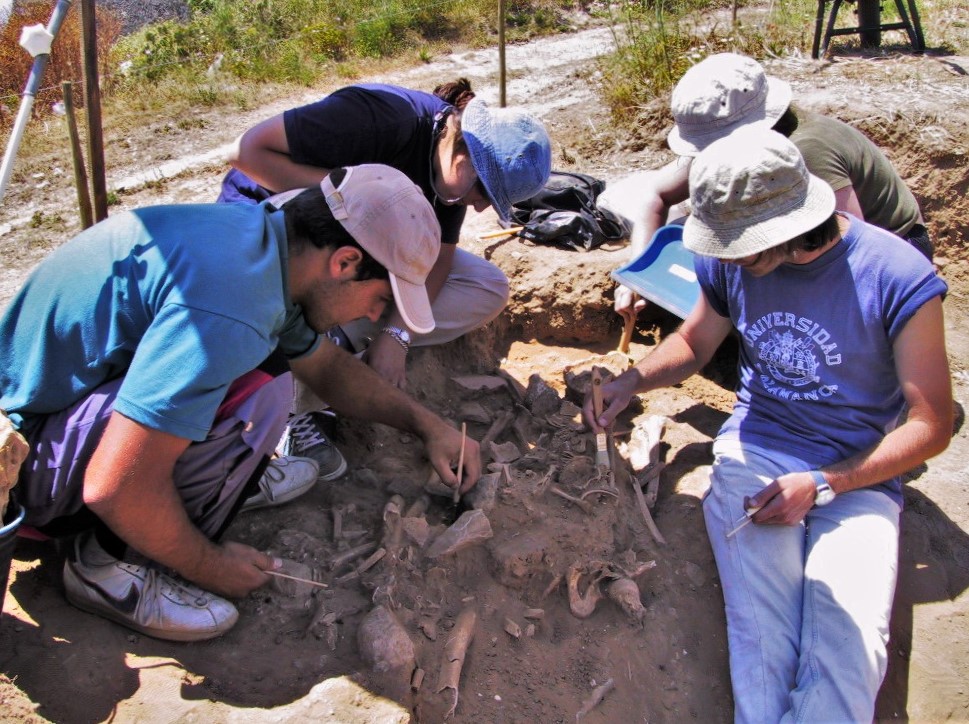
O Sul Informação is following the work from the inside, with weekly chronicles written by archeologists Maria João Valente and Cristina Garcia, coordinators of the campaign, which will last until the 13th of July:
Cacela-a-Velha is a land of cemeteries.
There is the old cemetery with the tomb of José Gil Cardeira, who died in 1850. It is said that he was the strongest man in that region, who killed a snake measuring six meters in length with his hands. And an ossuary from an unknown period.
Here are also buried many victims of the pneumonic fever of 1917-1918, which devastated Europe during the First World War.
Until recently, Mr. Rui looked after the new cemetery, where he now rests. A man with clear eyes, kind, always helpful in helping Cacela's archaeologists and available for conversation.
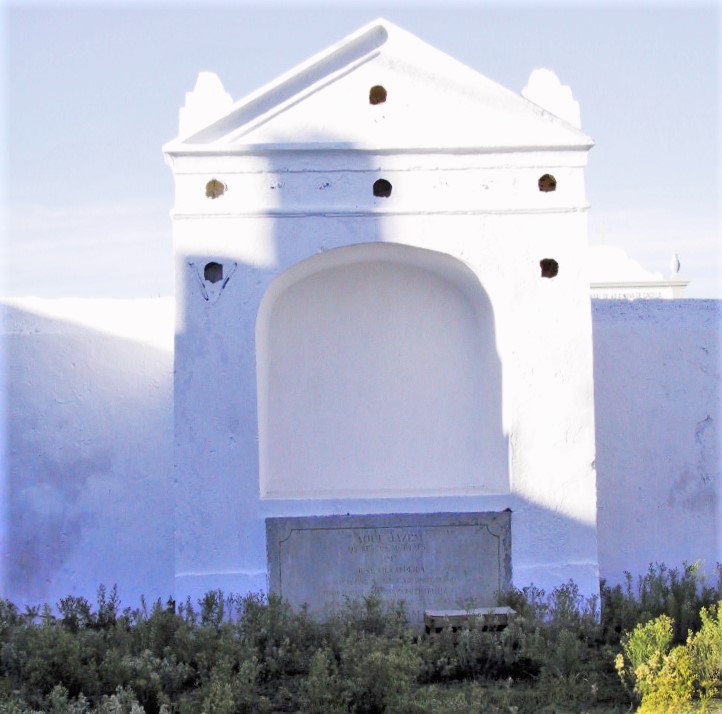
Archaeologists, with this mania for digging and reading history on earth, found a third cemetery in Cacela. It is located on the land along the Ribeira das Hortas, called Poço Antigo. How did the adventure start? First a skull appeared along the path. “It's Islamic, you have to dig this out,” said some well-known archaeologists.
First procedure, find the owner and ask for permission to carry out the archaeological excavation. Captain Assunção and his wife were distinguished by their education, culture and civility: they did not hesitate to give up the land for archaeological research.
The agreement and financing were established between the entities, at the initiative of the Ria Formosa Natural Park, support from European funds and the Algarve Region Coordination Commission, collaboration with the Mértola Archaeological Field and the participation of the Vila Real de Santo City Council António, the conditions were created to start the archaeological project.
The year was 1998. After all, the skull was not Islamic. Six skeletons were found and in 6 a new archaeological campaign was carried out in that place.
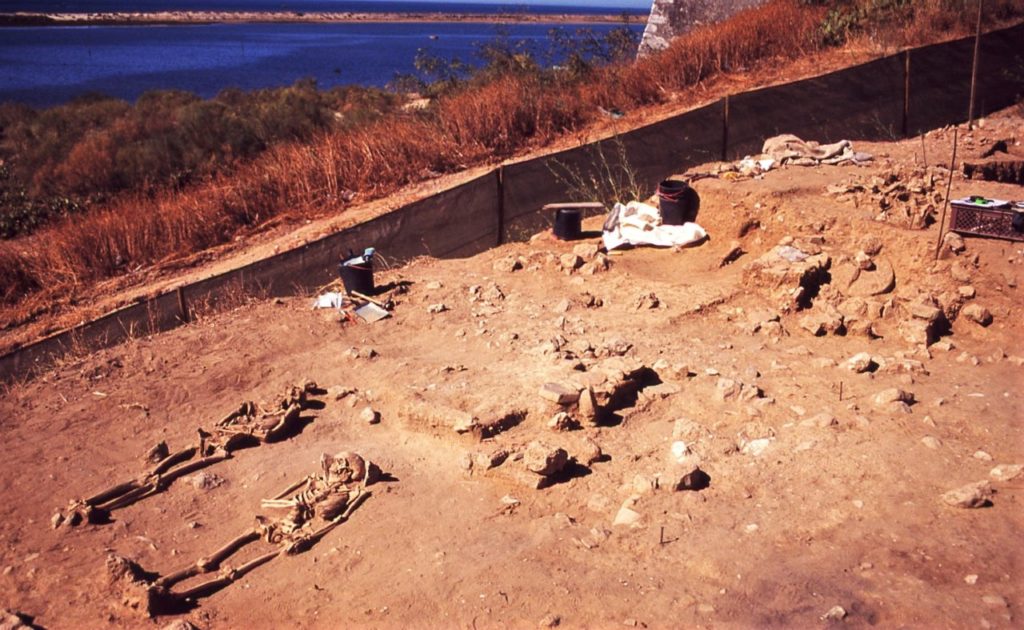
In total, an area of 212 square meters with 56 graves was excavated and 74 people were counted.
The graves were simple pits dug into the ground. The skeletons were in a supine position with the arms normally crossed over the chest or abdomen, according to the assumptions of the Christian faith. Pins and small fragments of fabric were found, probably corresponding to linen or woolen cloths that wrapped the deceased.
Sometimes, there was the intentional act of composing the grave, for example, placing the head on a stone pillow, delimiting the head with blocks or placing stones laterally to keep the frontal area of the head facing east.
One of the skeletons (grave 39) was surrounded by several iron nails and metal rosettes, which led to the conclusion that it had been buried in a coffin. The right arm was placed at the side of the body and the left arm bent over the abdomen. It also had another peculiarity: a metallic pendant in the shape of a scallop, symbol of Santiago de Compostela pilgrims. Was he a member of the Order of Santiago militia installed in Cacela?
The anthropological analysis concluded that it would be an individual with an age at death above 50 years and an approximate height of 1,64m. Later, the analytical work in the office allowed the anthropologist to identify marked osteoarthritis in the spine and marked tooth wear, with caries and a trace of abscess. The skeleton had a lesion in the frontal bone (skull), a probable consequence of a blow with a sharp-pointed object.
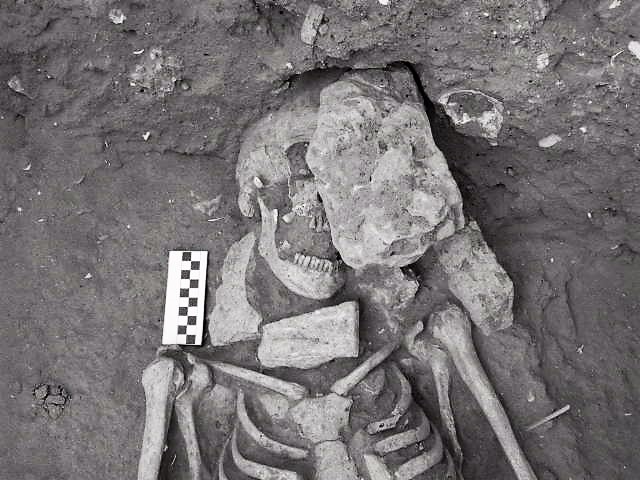
Another skeleton caught the attention of archaeologists: in grave 31, its neck was surrounded by a set of three limestone stones. A larger boulder was placed so as to cover the upper surface of the skull. This arrangement of stones can reveal a purpose. For example, the intention to prevent the deceased at the moment of resurrection from being able to orient themselves in such a way as to reach the camp of heaven or to prevent the deceased, even as a matter, from disturbing the living.
In this regard, Professor José Mattoso wrote: the “ritual of immobilizing the corpse (was) especially necessary when the deceased or deceased had special occult powers, when it was a witch or sorcerer, when it was a criminal, of a suicide or of someone unexpectedly killed in an accident”.
Of the 58 skeletons studied, it was found that half were men, a high number of children and young people aged up to 16 years and women represented 25% of this group.
In medieval times, people's age was divided into childhood up to 7 years old, childcare up to 14, adolescence up to 21, young age up to 50, old age up to 70, senior up to 80 years and until the end of life, decrepitude. From the age of 14, the young person would be able to develop activities typical of an adult.
After a study in the laboratory, the anthropologist concluded that Cacela's group was developing work of high physical hardship, which not even children escaped. With increasing age, the prevalence of degenerative lesions, such as infections, arthrosis, and periostitis, also increased. Injuries due to continued and repetitive exertion of certain muscles abounded equally in this group. That he also had strong food shortages, demonstrated by the high number of caries and hypoplasia.
Accidents such as falls, fractures of a foot or a vertebrae were recurrent. Accidents caused various injuries that were badly consolidated and the near absence of medical care at that time caused infections and suffering in people's daily lives.

Two absolute datings were performed on fragments of two skeletons. This dating method is applied as follows: living beings ingest carbon-14 through plants. These C14 atoms remain constant throughout the life of a living being. When the living being dies, the C14 starts to reduce in the body and is not replaced again.
Thus, it is possible, in the laboratory, to measure the percentage of C14 (in human bone, for example) and calculate the age of the living being.
Now the reports presented results from dating between 1240-1260. We know from ancient documents that the Castle of Cacela was conquered in the years 1238 or 1240, by militias of the order of Santiago, at the service of D. Afonso III of Portugal.
Thus, the set of graves excavated in Cacela-a-Velha may correspond to the first generation of settlers in the eastern Algarve, after the conquest of the kingdom of the Algarve. This group possibly comprised residents of the castle, tenant peasants, hired peasants, shepherds, fishermen, artisans, some cleric and elements of the castle's military garrison.
Men and women, certainly brave, who performed the tasks assigned to them in the domestic space, in tents or shacks, in bread and tile ovens, in farmland, in the mountains, in the castle, in the port, on the river, aiming to ascend the social hierarchy in time of reconquest.
Twenty years after the first archaeological excavation, we return to the ground.
We are now looking for the first chapel of Nossa Senhora dos Mártires, which would be in that place giving protection to the deceased.
We also sought answers to some questions, such as: how big is this cemetery? In what period of time was it used? What would be the characteristics of this living community? How did they live? How did they feed? Were they born in Cacela or were they from other places?
Get to work!
We will talk about Cacela again next week (you can read the previous chronicle here). For more detailed information, you can watch the presentation of this project on the 4th of July (Wednesday, at 18 pm) at the Historical Archive of Vila Real de Santo António (telephone 00).
Finally, if you want to visit the excavation, the Open Day to the public will take place on the 9th of July, from 10:00 am to 13:00 pm. You will be most welcome.
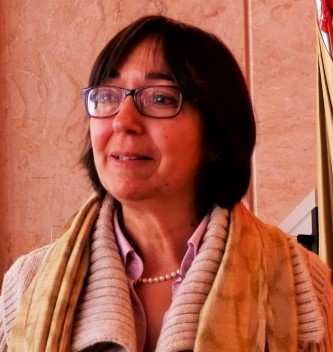
Author: Cristina Teté Garcia
Co-coordinator of the archeological works of Cacela
Senior technician at the Regional Directorate of Culture of the Algarve and researcher at CEAACP (Center for Studies in Archeology, Arts and Sciences of Heritage)
Cristina Tété Garcia writes according to the old Orthographic Agreement


















Comments